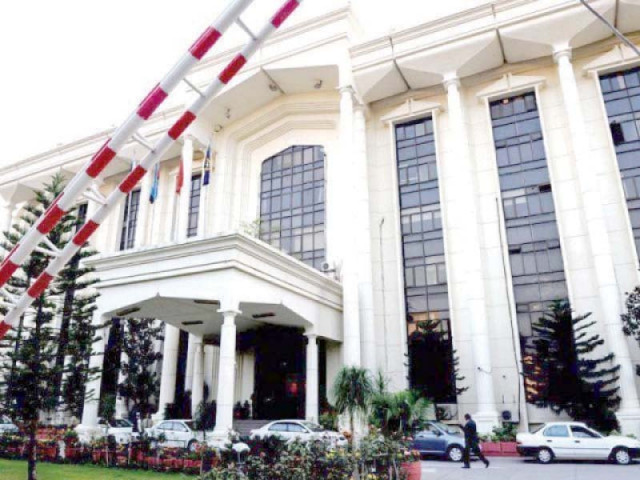Customs duties could see hike as FBR tackles income tax relief
Proposal is to increase rates of three tariff slabs of 3%, 11% and 16% by another 1%

In 2016, the government had reduced the number of slabs in customs duties from five to four, in line with an IMF condition. PHOTO: FILE
The Federal Board of Revenue is bewildered with the question of how to maintain its current tax collection base that is expected to remain at around Rs3.85 trillion this year due to the government’s decision to appease various lobbies ahead of the elections, said sources in the tax body.
They said one option the FBR has almost finalised is to increase customs duty on raw materials, semi-finished and finished goods by another 1%. They said the proposal was to increase rates of three custom tariff slabs of 3%, 11% and 16% by another 1%. The proposal would be presented to Prime Minister Shahid Khaqan Abbasi next week.
If the premier accepts the proposal, this may provide some solace to the FBR, but would further increase the cost of doing business. This could also neutralise some benefits that the export-oriented industries recently received in the shape of rupee devaluation. The textile sector imports raw material worth $3 billion every year and any increase in rates would push cost up.
Sources said that there were two views on increasing the minimum 3% slab rate, as this could adversely hit industries that are heavily dependent on imported raw materials. There are about 2,400 tariff lines that could be affected if the government decides to increase the rate of minimum slab rate 3% to 4%.
In case of a change in 11% and 16% slab rates another 2,400 tariff lines, mostly comprising semi-finished and finished goods, would be affected, sources added.
They said that the FBR may not be able to increase the highest slab of 20% rate due to Pakistan’s commitments to the World Bank and other international financial institutions. This would minimise the impact of additional revenues that the FBR wants to get in order to retain its current tax base.
In 2016, the government had reduced the number of slabs in customs duties from five to four, in line with an IMF condition. Under the $6.2-billion IMF programme, Pakistan had committed in September 2013 to simplify customs tariff structure by reducing slabs from seven to four over a period of three years. At that time, it also gave assurance that the highest slab rate will not be increased from 20%.
In July 2016 as well, the government had increased the 10% slab rate to 11% and 15% slab rate to 16%. Currently, an overwhelming majority of goods are imported under four different customs tariff slabs of 3%, 11%, 16% and 20%. However, there are exceptions, where the government is charging higher than 20% custom duties rates like vehicles, steel and agriculture products in the name of protecting domestic industries and farmers.
The government has already promulgated a presidential ordinance to reduce income tax rates from 35% to 15% and increase the income tax exemption threshold to Rs1.2 million with effect from July. This is expected to dent the FBR’s revenues by about Rs100 billion.
The government is also facing pressures from industrialists to withdraw 5% tax on bonus shares and 10% tax on undistributed profits. There is also a demand to restore the group-income-tax relief for big firms. Sources said that there was a general acceptability for these three demands at the top political level.
This has worried the top management of FBR that is now looking for various options to collect Rs4.435 trillion for fiscal year 2018-19. Prime minister has already turned down the FBR chairman’s demand to lower the proposed target to Rs4.3 trillion. In retaliation, the chairman offered to bow out.
“If rates of all four slabs are increased by 1%, then the FBR could fetch additional Rs50 billion. However, due to selective increase in slab rates, the impact may not be more than Rs20 billion,” claimed FBR sources.
FBR is currently collecting about 52% of its total taxes at the import stage under the heads of withholding taxes, sales tax, customs duties and regulatory duties.
Customs and regulatory duties have become important and an easy source of income generation for the FBR during the past five years. Any increase in rates automatically results in an increase in the collection of sales tax, which is calculated after including all duties and levies into the price of the goods.
Published in The Express Tribune, April 22nd, 2018.
Like Business on Facebook, follow @TribuneBiz on Twitter to stay informed and join in the conversation.



















COMMENTS
Comments are moderated and generally will be posted if they are on-topic and not abusive.
For more information, please see our Comments FAQ